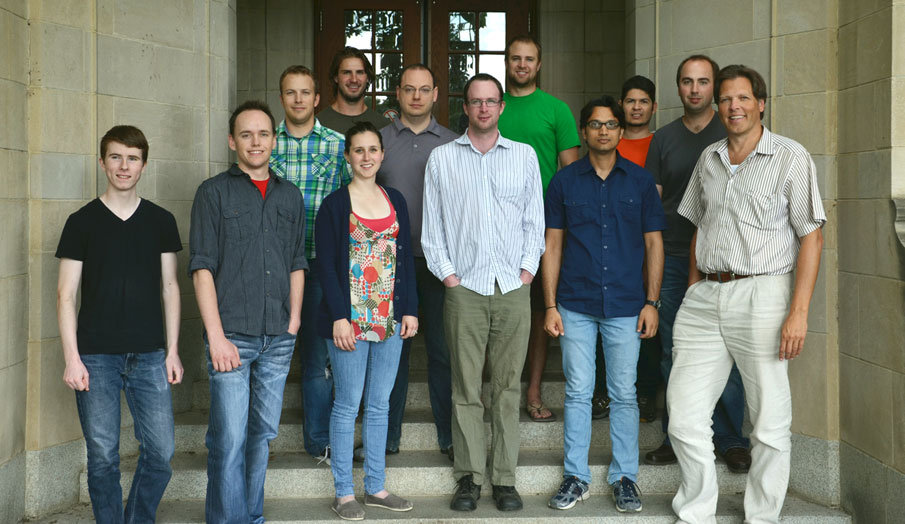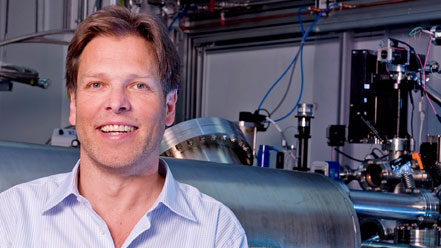Alexander Moewes
Beamteam Studies New Materials. Using the Synchrotron
Dr. Alexander Moewes, Professor of Physics and Canada Research Chair in Materials Science with Synchrotron Radiation, heads up the Beamteam at the University of Saskatchewan. The Beamteam is a research group in condensed matter physics and Materials Science at the U of S lead by Dr. Moewes. The Beamteam attracts top graduate students from across the country who come to the U of S to research and carry out their postgraduate studies.
The Beamteam’s research goals include developing new detectors, sensors and other devices with new or improved electric, optical, chemical and magnetic properties. They have been for example able to distinguish between two highly similar chemicals – one of which is a highly dangerous explosive. The research following has ensured that the necessary steps are being taken to develop small, inexpensive and portable sensors which can detect the presence of airborne explosive molecules. The Beamteam’s ultimate research goal is to improve the knowledge of complex materials in order to custom design materials with specific properties.
Dr. Moewes’ research interests concern generally the study of atomic, chemical and electronic structure of advanced materials. These include ultra hard materials, superconducting materials and materials for spintronic applications. The group also works on layered materials like graphene and its semiconductor analog – silicene. In their recent work on ultra hard materials, they most recently have demonstrated a material that was theoretically proposed to be harder than diamond, γ-C3N4, cannot exist.
Other research examines spinelectronic materials, which could be the next revolution in computer technology. There is a physical limit of how densely charge can be arranged in computer chips before the electrons interact with each other. Scientists are trying to use a property of the electron, the spin, to store information. In this research semiconductors are infused with magnetic materials and the group has found ways to predict where the magnetic dopants reside in the host lattice and how this affects the magnetism.
A distinguished author, Dr. Moewes has authored/co-authored over 220 publications in peer-reviewed journals. As well, his group has published more than 170 peer-reviewed publications since 2000.

